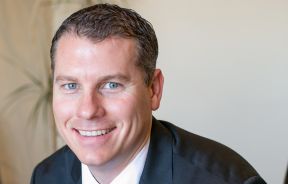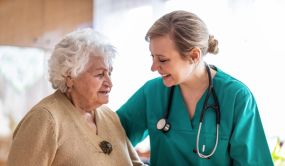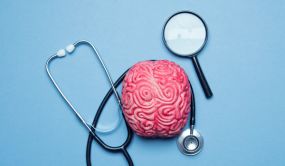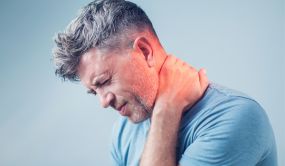How to Protect Your Health in the First 24 Hours After a Car Accident

The jarring reality of a vehicle collision is a frequent and tragic event across the United States. In fact, car accidents are responsible for an estimated 100 deaths each day and send 2.1 million people to the emergency room annually. In the moments following a crash, chaos, confusion, and a rush of adrenaline can easily take over, often masking the presence of serious injuries.
Navigating this high-stress situation with a clear plan is essential for your long-term well-being. This guide provides clear, actionable steps to take within the first 24 hours to protect your most important asset: your health. By acting deliberately, you can prevent minor issues from becoming major complications and ensure you are on the right path to a full recovery.
At the Scene: Your First Priority Actions
What you do immediately at the crash site can have a significant impact on your health and safety. The priority is to secure the area, assess your physical condition, and gather essential information without putting yourself or others at further risk.
Ensure Safety and Call for Help
Your first action should always be to assess immediate danger. If it is possible and safe to do so, move your vehicle to the shoulder or out of the flow of traffic to prevent a secondary collision. Turn on your hazard lights to alert other drivers.
Next, call 911 without delay, even if the accident seems minor. This summons both medical first responders who can provide immediate aid and law enforcement to secure the scene. A formal police report provides essential documentation of the accident, which is often required by insurance companies to process a claim.
Perform a Quick Self-Check
While waiting for help to arrive, conduct a brief self-assessment for any obvious injuries. Check for cuts, active bleeding, signs of head trauma, or potential broken bones. Pay attention to any sharp pain or inability to move a limb.
It is critical to advise against moving if you suspect a neck or back injury, as this could worsen a potential spinal cord issue. If you are in pain or feel dizzy, try to remain still and wait for paramedics to assist you safely.
A Step-by-Step Checklist for the Scene
While waiting for first responders, there are several key steps you can take to document the incident, provided you are not seriously injured and can move safely.
- Check on other passengers and individuals involved in the accident. Ask if they are okay, but avoid administering medical aid unless you are qualified; wait for professionals.
- Use your phone to take photos of the scene from multiple angles. Document the damage to all vehicles involved, skid marks on the road, traffic signals, and any of your own visible injuries.
- Exchange contact and insurance information with the other driver(s). Get their full name, phone number, address, driver's license number, license plate number, and insurance policy details.
- Avoid discussing fault or apologizing. Statements like "I'm so sorry" can be misinterpreted as an admission of guilt, which can complicate insurance and legal matters later.
- If there are witnesses, get their names and phone numbers. Their impartial accounts of what happened can be invaluable for both medical and insurance purposes.
- Cooperate with the police when they arrive. Provide a clear, factual account of the events leading up to the collision. Stick to what you know and avoid speculating.
The Critical Hours After: Recognizing Hidden Dangers
The 24-hour period after a car accident is a critical window for identifying injuries that may not be immediately apparent. Adrenaline can mask significant pain, and some of the most common collision-related injuries have delayed symptoms. Seeking prompt medical attention is non-negotiable.
Why You Must See a Doctor, Even if You Feel Fine
The surge of adrenaline during a car crash is a powerful painkiller. Many people walk away from an accident feeling fine, only to wake up in severe pain the next day. A medical professional can identify underlying issues like internal bruising, hairline fractures, or soft tissue damage that you may not feel yet. Getting immediate medical help can be life-saving.
Furthermore, many serious conditions, such as cervical spine dysfunction, only become apparent after a professional evaluation. A thorough medical check-up creates a baseline record of your health post-accident, which is vital for proper follow-up care.
Common Delayed-Symptom Injuries
Some of the most serious injuries may not show symptoms for hours or even days. According to legal and medical experts, whiplash is a prime example of an injury that may not present symptoms until well after the collision. What initially feels like minor neck stiffness can develop into chronic pain and limited mobility if left untreated.
Other common delayed-symptom injuries include concussions, which can manifest as headaches or confusion hours later; soft tissue injuries like sprains and strains; and even dangerous internal bleeding. Never dismiss minor aches or stiffness in the day following an accident, as they could be early indicators of a more significant musculoskeletal problem.
Symptoms to Watch For: Immediate vs. Delayed
Being vigilant about your body's signals is crucial. Here is a comparison of symptoms that may appear immediately versus those that can surface hours or days later.
| Immediate Symptoms to Address | Delayed Symptoms (Hours to Days Later) |
|---|---|
| Visible cuts or bleeding | Persistent headaches, dizziness, or confusion (Concussion) |
| Suspected broken bones or fractures | Neck, shoulder, or back stiffness and pain (Whiplash) |
| Loss of consciousness, however brief | Numbness, tingling, or weakness in limbs (Nerve damage) |
| Difficulty breathing or chest pain | Abdominal pain, deep bruising, or swelling (Internal injury) |
| Obvious pain and discomfort | Emotional changes like anxiety, irritability, or PTSD |
Safeguarding Your Recovery: The Power of Documentation
Meticulous record-keeping is a powerful tool for managing your health after an accident. It helps your medical team track your progress and provides a clear, detailed history for any subsequent insurance or legal processes that may arise.
Creating a Detailed Health Journal
From the very first day, start a journal to document your health journey. Record every physical and mental symptom you experience, no matter how minor it seems. Note your pain levels on a scale of 1 to 10 throughout the day.
Also, keep track of any medication you take, disruptions to your sleep patterns, and any daily activities you now find difficult or impossible to perform. This detailed log will be an invaluable resource for your doctor and can help illustrate the full impact of the accident on your quality of life.
The Legal Importance of Prompt Medical Records
From a legal and insurance standpoint, seeking an immediate medical evaluation creates an official record that links your injuries directly to the accident. This documentation is crucial for validating insurance claims and protecting your rights in a potential personal injury case. Insurance companies may argue that a delay in seeking care means your injuries were caused by another event, not the collision.
Understanding the immediate steps to take after a car accident includes recognizing how proper medical and legal documentation safeguards your future. This is particularly important because the gap between a legal settlement and a person's actual physical recovery can be significant if not managed correctly from the start.
Don't Forget Your Mental Health
The impact of a car accident is not just physical; it is a traumatic event that can have a lasting psychological effect. It is common to experience anxiety, depression, or even post-traumatic stress disorder (PTSD) in the weeks and months following a crash.
If you experience persistent emotional distress, flashbacks of the event, nightmares, or a new fear related to driving, it is important to speak with a mental health professional. Acknowledging and addressing the mental health impact is a critical component of a comprehensive recovery.
Taking Control of Your Recovery Starts Now
In the aftermath of a car accident, focusing on three critical actions can define your path forward: ensuring your safety at the scene, seeking a comprehensive medical evaluation without delay, and meticulously documenting every aspect of your physical and mental health journey. These steps are your first line of defense against long-term complications.
While you couldn't control the accident, you can take control of your recovery. By prioritizing your health from the very first day, you empower yourself to heal properly and build the strongest possible foundation for your future well-being.



























